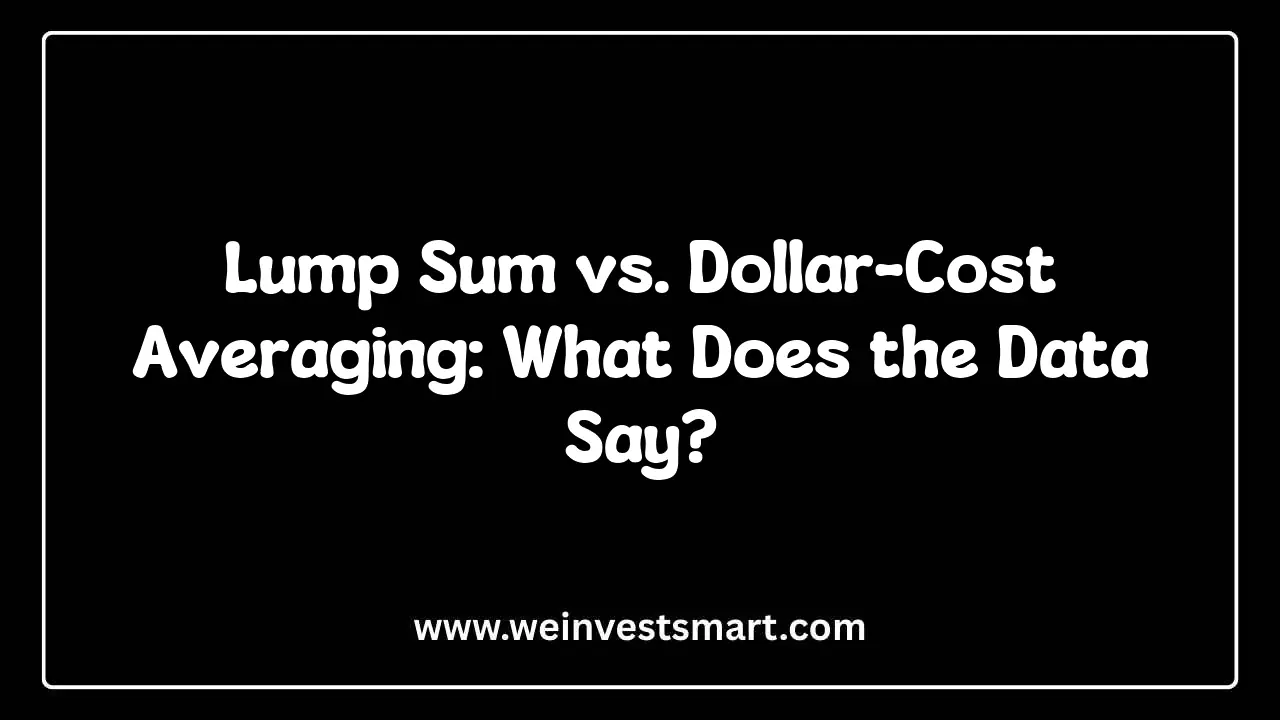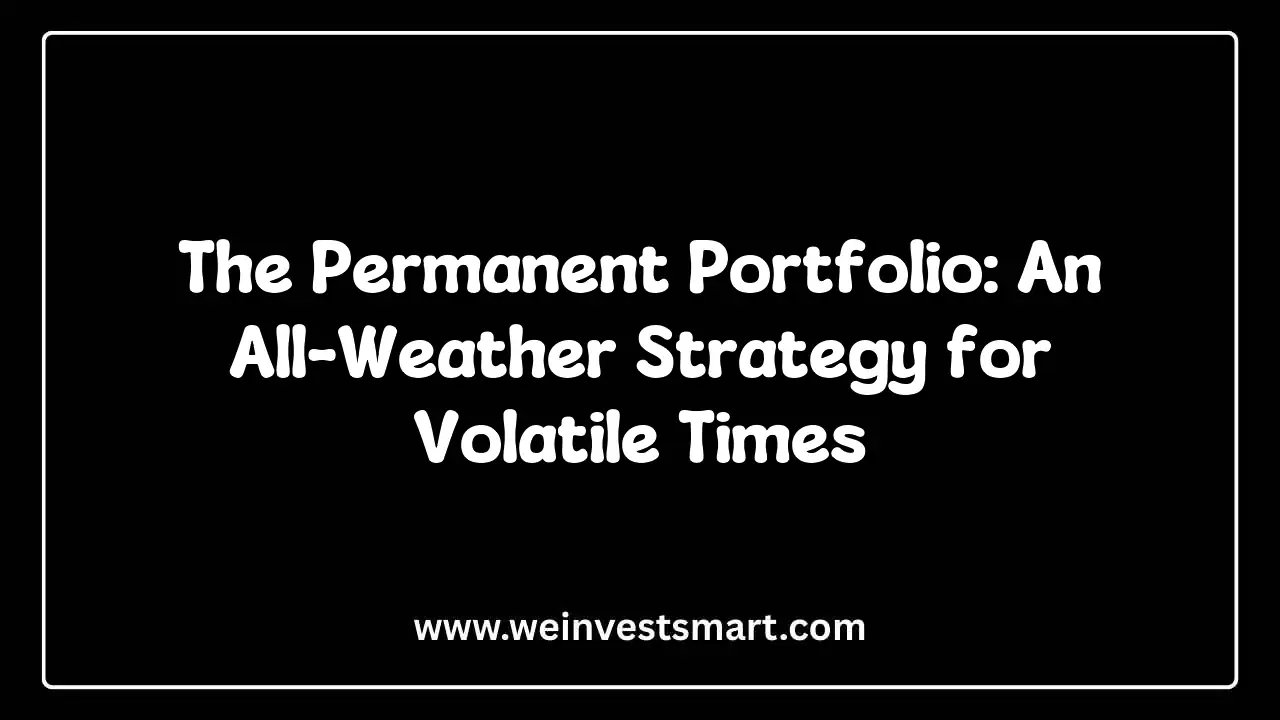· WeInvestSmart Team · investment-strategies · 9 min read
Dollar-Cost Averaging (DCA): The Most Powerful Antidote to Market Timing
Stop trying to time the market. Discover Dollar-Cost Averaging (DCA), the simple, automated strategy of investing a fixed amount regularly. Learn how it reduces risk, lowers your average cost, and removes emotion from investing.
Most people believe that successful investing means correctly predicting the future. They spend countless hours watching financial news, reading expert forecasts, and agonizing over the perfect moment to buy or sell. But here’s the uncomfortable truth: trying to “time the market” is a fool’s errand. It’s a high-stress, low-reward game that even seasoned professionals consistently fail at. Going straight to the point, the instinct to buy low and sell high is precisely what causes most investors to do the exact opposite.
We’ve all felt it. The market is soaring, and the fear of missing out (FOMO) is overwhelming, so we buy in near the top. Then, the market tanks, and panic sets in, so we sell at the bottom to “cut our losses.” This cycle of greed and fear is a wealth-destroying machine.
But what if we told you there was a simple, automatic strategy that acts as a powerful antidote to this self-sabotage? A method that not only removes emotion from the equation but also systematically reduces your investment risk over time? Here’s where things get interesting. It’s called Dollar-Cost Averaging (DCA), and you might already be doing it without even knowing. And this is just a very long way of saying that the secret to successful long-term investing isn’t about being a genius market timer; it’s about being a disciplined, consistent participant.
The Impossible Game of Market Timing
To understand why DCA is so effective, we first need to appreciate the profound absurdity of market timing. To successfully time the market, you have to be right not once, but twice: you must know the perfect time to sell (the peak) and the perfect time to buy back in (the bottom). The funny thing is that this is an absurd standard to put on ourselves, especially when the consequences of being wrong are so severe.
The data on this is brutal and unforgiving. Research has shown that missing just a handful of the market’s best days can cripple your long-term returns. For example, one analysis found that missing the 25 best trading days between 1970 and 2009 would have cut an investor’s total return by 39%. What makes this even trickier is that the market’s best days often happen immediately after its worst days, a period when fearful investors are most likely to be sitting on the sidelines in cash.
So, what do we do? We must accept that we cannot predict the future. Instead of trying to outsmart the market—a game rigged against us—we should adopt a system that leverages the market’s volatility to our advantage. This is the core genius of Dollar-Cost Averaging.
You may also be interested in: Understanding Market Capitalization: Why Large-Cap, Mid-Cap, and Small-Cap Stocks Matter
What is Dollar-Cost Averaging, Really?
Going straight to the point, Dollar-Cost Averaging (DCA) is the practice of investing a fixed amount of money at regular intervals, regardless of market highs or lows. That’s it. No crystal balls, no gut feelings, no panic buttons. You simply automate your investing on a set schedule—say, $200 every month—and let the system do the work. If you have a 401(k) or a similar retirement plan, you are already using DCA every time a contribution is deducted from your paycheck.
The magic of this approach lies in a simple mathematical principle. When the price of your chosen investment (like an S&P 500 ETF) is high, your fixed dollar amount buys you fewer shares. When the price drops, that same fixed dollar amount automatically buys you more shares. Over time, this process can lower your average cost per share compared to what you might have paid if you invested a lump sum at a single point in time.
Let me explain with a simple chart. Imagine you commit to investing $100 every month into an ETF.
| Month | Investment | Share Price | Shares Purchased | Total Shares Owned | Average Cost Per Share |
|---|---|---|---|---|---|
| Jan | $100 | $10 | 10.00 | 10.00 | $10.00 |
| Feb | $100 | $12 | 8.33 | 18.33 | $10.91 |
| Mar | $100 | $8 | 12.50 | 30.83 | $9.73 |
| Apr | $100 | $9 | 11.11 | 41.94 | $9.54 |
| May | $100 | $11 | 9.09 | 51.03 | $9.80 |
In this example, you invested a total of $500. Look at what happened in March when the price dropped to $8. Your $100 automatically bought more shares (12.50) than it did in February when the price was $12 (8.33 shares). By the end of five months, your average cost per share is $9.80, even though the price was $10 or higher for three of those months. You get the gist: DCA forces you to buy more when assets are on sale and less when they are expensive.
You may also be interested in: Saving vs. Investing: Why Your Savings Account Won’t Make You Rich
The Hidden Superpowers of Dollar-Cost Averaging
This strategy sounds deceptively simple, but its benefits are profound. It’s not just a mechanical process; it’s a behavioral framework that protects you from your worst instincts.
- It Automates Discipline and Removes Emotion: The single greatest enemy to long-term returns is emotional decision-making. DCA acts as a firewall against fear and greed. By putting your investments on autopilot, you commit to a rational plan made during a calm moment. You are no longer tempted to panic-sell during a downturn or FOMO-buy during a rally. The decision is already made.
- It Reduces the Risk of Bad Timing: Investing a large sum of money all at once can be terrifying. What if you invest it all the day before a major market crash? DCA mitigates this “timing risk” by spreading your entry points out over time. While some of your purchases will inevitably be at higher prices, others will be at lower prices, smoothing out your overall cost basis and reducing the impact of volatility.
- It Turns Volatility into an Opportunity: For a market timer, volatility is a source of constant anxiety. For a DCA investor, it’s an advantage. Every market dip becomes an opportunity for your fixed investment to buy more shares at a discount, which can accelerate your wealth accumulation over the long run. You start to view market weakness not as a threat, but as a buying opportunity.
This sounds like a trade-off, but it’s actually a desirable thing: we covet this uncertainty. DCA reframes your entire relationship with the market, turning you from a nervous spectator into a patient, systematic accumulator of assets.
You may also be interested in: The Ultimate Guide to Rebalancing Your Portfolio
What About the Counterarguments? The Lump-Sum Debate
So, what do we do when faced with a large sum of money, like an inheritance or a bonus? Should we still use DCA or invest it all at once (lump-sum investing)?
And here is where things get interesting. Purely from a historical and mathematical standpoint, lump-sum investing (LSI) has outperformed DCA about two-thirds of the time. The logic is straightforward: since markets generally trend upward over the long term, the sooner your money is fully invested, the more time it has to compound. Delaying investment through DCA means keeping some of your money in cash, which may miss out on gains during a rising market.
But even though LSI might be “mathematically optimal,” we must acknowledge that humans are not perfectly rational robots. The biggest risk for many investors isn’t underperforming the market; it’s abandoning their strategy altogether. The psychological pain of investing a lump sum right before a 30% market crash can be so severe that it causes people to sell at the bottom and never return.
DCA is a form of regret minimization. It may lead to slightly lower returns in a bull market, but it provides a massive behavioral advantage by making it easier to start investing and, more importantly, to stay invested through the inevitable downturns. For most people, a strategy they can stick with is infinitely better than a “perfect” strategy they abandon in a panic.
You may also be interested in: What is Asset Allocation and Why Is It More Important Than Stock Picking?
The Bottom Line: Your Most Reliable Investing Ally
Dollar-Cost Averaging is not a get-rich-quick scheme. It will not help you pick the next hot stock, and it won’t protect you from losses in a prolonged bear market. What it will do is far more valuable. It provides a simple, powerful, and automated framework for building wealth consistently over the long term. It shifts your focus from the impossible task of prediction to the achievable goal of participation.
It is the ultimate antidote to the anxiety and analysis paralysis that plagues so many investors. By committing to a regular, automated investment plan, you are making a pact with your future self—a promise to ignore the short-term noise and stay focused on your long-term goals.
And this is just a very long way of saying that the most critical factor in your investment success is not timing the market, but your time in the market. Dollar-Cost Averaging is the most effective tool humanity has ever devised to ensure you achieve just that. You get the gist: automate your savings, invest consistently, and let compounding do the heavy lifting.
This article is for educational purposes only and should not be considered personalized financial advice. Consider consulting with a financial advisor for guidance specific to your situation.
Dollar-Cost Averaging (DCA) FAQ
What is Dollar-Cost Averaging (DCA)?
Dollar-Cost Averaging (DCA) is an investment strategy where you invest a fixed amount of money at regular intervals, such as monthly, regardless of the asset’s price. This approach helps to lower the average cost per share over time and reduces the risk of investing a large sum at a market peak.
Is Dollar-Cost Averaging better than lump-sum investing?
Mathematically, lump-sum investing has historically outperformed DCA about two-thirds of the time because markets tend to rise over the long term. However, DCA is often better from a behavioral standpoint, as it removes the stress of market timing, reduces the impact of volatility, and helps investors stay disciplined.
How does Dollar-Cost Averaging reduce risk?
DCA reduces risk by spreading your investment out over time. Instead of making one large bet on the market’s direction, you make many smaller investments. This way, you buy more shares when prices are low and fewer when they are high, which can smooth out the effects of volatility and lower your average cost.
What is the best frequency for Dollar-Cost Averaging?
The best frequency is the one you can stick to consistently. For most people, this aligns with their pay cycle, such as weekly, bi-weekly, or monthly. The key is consistency and automation, not the exact interval. The goal is to invest as soon as you have the money available.
Can I lose money with Dollar-Cost Averaging?
Yes, Dollar-Cost Averaging does not guarantee a profit or protect against loss in declining markets. If the overall value of the investment you are buying consistently goes down over the long term, your portfolio will lose value. However, the strategy can lessen the impact of volatility along the way.



